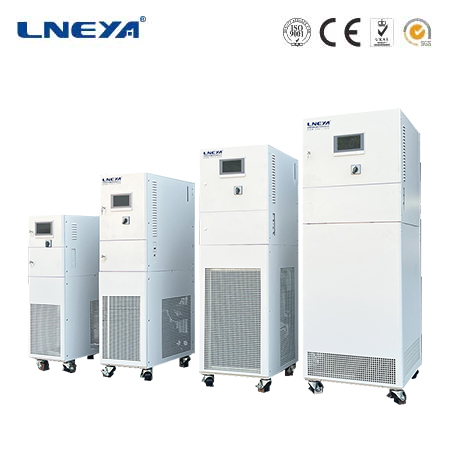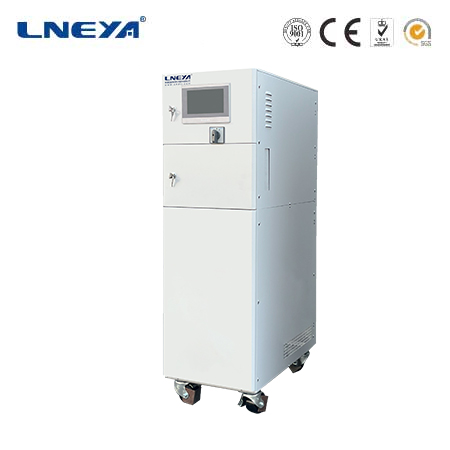chiller heating and cooling system
Chiller Heating and Cooling System: A Comprehensive Guide
Introduction
A chiller heating and cooling system is a versatile HVAC solution that provides both cooling and heating capabilities in a single unit. These systems are designed to maintain precise temperature control in various environments, such as commercial buildings, industrial facilities, and laboratories. By integrating heating and cooling functions, they offer energy efficiency, space savings, and year-round comfort. This article delves into the working principles, types, applications, advantages, and considerations for selecting a chiller heating and cooling system.

Working Principle
A chiller heating and cooling system operates on the vapor-compression refrigeration cycle for cooling and can incorporate additional components for heating. The key components include:
Compressor: The compressor pressurizes the refrigerant gas, increasing its temperature and pressure.
Condenser: The high-pressure, high-temperature refrigerant gas flows into the condenser, where it is cooled by air or water, condensing into a high-pressure liquid.
Expansion Valve: The high-pressure liquid refrigerant passes through the expansion valve, where its pressure is reduced, causing it to partially evaporate and cool.
Evaporator: The cold, low-pressure refrigerant enters the evaporator, absorbing heat from the process fluid (usually water or a water-glycol mixture). The refrigerant evaporates completely, turning back into a low-pressure gas, which is then returned to the compressor to repeat the cycle.
For heating, the system can incorporate:
Heat Pump: A heat pump reverses the refrigeration cycle to provide heating by extracting heat from the outside air or water and transferring it indoors.
Electric Heaters: Electric heaters can be used to provide additional heating when needed.
Types of Chiller Heating and Cooling Systems
Air-Cooled Chillers with Heat Pumps: These systems use ambient air to cool the refrigerant in the condenser and can reverse the cycle to provide heating.

Water-Cooled Chillers with Heat Pumps: These systems use water to cool the refrigerant in the condenser and can reverse the cycle to provide heating.
Dual-Function Chillers: These systems integrate both cooling and heating functions in a single unit, offering seamless temperature control.
Modular Chiller Systems: These systems consist of multiple independent units that can operate individually or in tandem, providing flexibility and redundancy.
Applications of Chiller Heating and Cooling Systems
Commercial Buildings: These systems are used in office buildings, shopping malls, and hotels to provide efficient heating and cooling for HVAC systems.
Industrial Facilities: These systems are used in manufacturing plants, data centers, and food processing facilities to maintain precise temperatures for equipment and processes.
Healthcare Facilities: Hospitals and medical centers use these systems to maintain precise temperatures for medical equipment and patient comfort.
Educational Institutions: Schools and universities use these systems for heating and cooling classrooms, laboratories, and data centers.
Retail Stores: These systems are used in retail environments to provide comfortable temperatures for customers and employees.
Advantages of Chiller Heating and Cooling Systems

Energy Efficiency: By integrating heating and cooling functions, these systems reduce energy consumption and operational costs.
Space Savings: The compact design saves valuable floor space, making it ideal for facilities with limited space.
Year-Round Comfort: These systems provide both heating and cooling, ensuring comfortable temperatures throughout the year.
Precise Temperature Control: Advanced control systems ensure accurate and stable temperature control, improving performance and comfort.
Versatility: These systems can be used in a wide range of applications, providing flexible temperature control solutions.
Considerations for Selecting Chiller Heating and Cooling Systems
Cooling and Heating Capacity: Determine the required cooling and heating capacity based on the heat load and temperature requirements of the application.
Energy Efficiency: Look for systems with high energy efficiency ratings and advanced control systems.
Type of System: Choose between air-cooled and water-cooled systems based on the availability of water and space constraints.
Control Features: Look for systems with advanced temperature control features, such as PID controllers and digital displays.
Maintenance Requirements: Opt for systems with low maintenance requirements and easy access to components for servicing.
Environmental Impact: Consider the environmental impact of the system, including energy and water consumption, and implement sustainable practices.
Conclusion
Chiller heating and cooling systems are versatile and efficient solutions for maintaining precise temperature control in various environments. Their ability to provide both heating and cooling in a single unit offers energy efficiency, space savings, and year-round comfort. By understanding the working principles, types, applications, and selection criteria, users can choose the right chiller heating and cooling system to meet their specific needs. This guide provides a comprehensive overview of chiller heating and cooling systems, equipping readers with the knowledge needed to make informed decisions about reliable and efficient temperature control solutions.
Related recommendations
water bath temperature control system
119Introduction to Water Bath Temperature Control SystemsWater bath temperature control systems are essential in scientific laboratories for tasks requiring the maintenance of samples at specific tem...
View detailsenvironment chambers
267Environment Chambers: Applications, Technology, and Market Trends Environment chambers play a critical role in various scientific and industrial applications, from studying atmospheric chemistr...
View detailstemperature controller manufacturer
87What is a Temperature Controller Manufacturer? A temperature controller manufacturer is a company that designs, engineers, and produces devices used to regulate and maintain specific temperatur...
View detailslab chiller
179Lab Chillers: Definition and ImportanceLab chillers, also known as precision chillers, are cooling systems designed to control and maintain specific temperatures in laboratory equipment. They are ...
View details
 LNEYA Thermal Test Chillers
LNEYA Thermal Test Chillers





HelloPlease log in